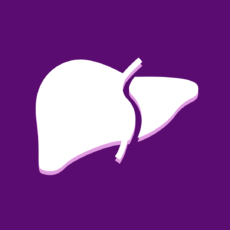Introduction
Steatotic liver disease (SLD) often doesn’t have any symptoms until advanced stages when the liver may have been damaged.
Most of the time, people are diagnosed with SLD when they have routine blood tests or an ultrasound for something else.
If your doctor is concerned about your liver health, they may discuss your medical and family history, and ask about how much alcohol you drink. They will also perform a physical examination, and order liver function tests.
Liver function tests (LFTs)
When doctors order routine blood tests, they may also ask for liver function tests (also called LFTs). Liver function tests measure the levels of proteins, enzymes and other substances made by your liver to check how well it’s working.
Liver cells are always dying and being replaced. When liver cells die they release liver enzymes into the blood. Liver function tests measure the levels of these enzymes. While liver enzyme levels don’t diagnose a specific condition, their combined results may indicate a potential problem with your liver, and whether further tests are necessary.
Scans to measure liver steatosis:
If your doctor suspects you have fat in your liver, they will probably order further tests.
Ultrasound
An abdominal ultrasound is the most widely used scan to check for liver steatosis.1 It’s quick and painless and usually enough to diagnose if you have fat on your liver.
Fibroscan
If you are diagnosed with steatotic liver disease, a Fibroscan may be used to check the amount of damage in your liver. When you have fat in your liver, your liver becomes inflamed. This can leave scarring (fibrosis) on your liver which can cause it to become stiff and not work as well as it should.
A Fibroscan will measure how much scarring (fibrosis) you have on your liver and will help diagnose the stage of disease.2 The more scarring you have, the more damaged your liver is. Results may show:
- little or no scarring
- some scarring
- lots of scarring
- very scarred (cirrhosis) – which can lead to liver failure or liver cancer.3
Although the scan is good at seeing severe liver damage and cirrhosis, sometimes a liver biopsy may be needed to check the level of liver damage . Your doctor will tell you what test is right for you.
Liver biopsy
Not everyone will need a liver biopsy. However, it can be helpful to see if other liver diseases could be contributing to steatotic liver disease. A biopsy is a minor surgical procedure where a specialist takes a tiny piece of your liver so they can examine it in a laboratory.
Stages of steatotic liver disease (SLD)
Steatotic liver disease has several phases of progression. Most people will only ever develop the first stage, often without knowing.4
- Stage 1 — simple fatty liver (steatosis) where there is a buildup of fat in the liver
- Stage 2 – Metabolic dysfunction-Associated Steatotic Liver Disease (MASLD) where there is inflammation on the liver
- Stage 3 – fibrosis (scar tissue) on the liver is present, caused by continual or chronic inflammation
- Stage 4 – cirrhosis where the liver is full of hard scarred tissue that stops the liver from working properly.
The good news is that the liver has an amazing ability to heal and repair itself – if you take care of it.
Looking after your liver is especially important in the early stages of disease. The earlier the stage of disease, the more likely you can reduce liver fat and inflammation, get rid of SLD and even reverse some scarring and early liver damage. Once SLD has progressed to later stages damage is not reversible.














